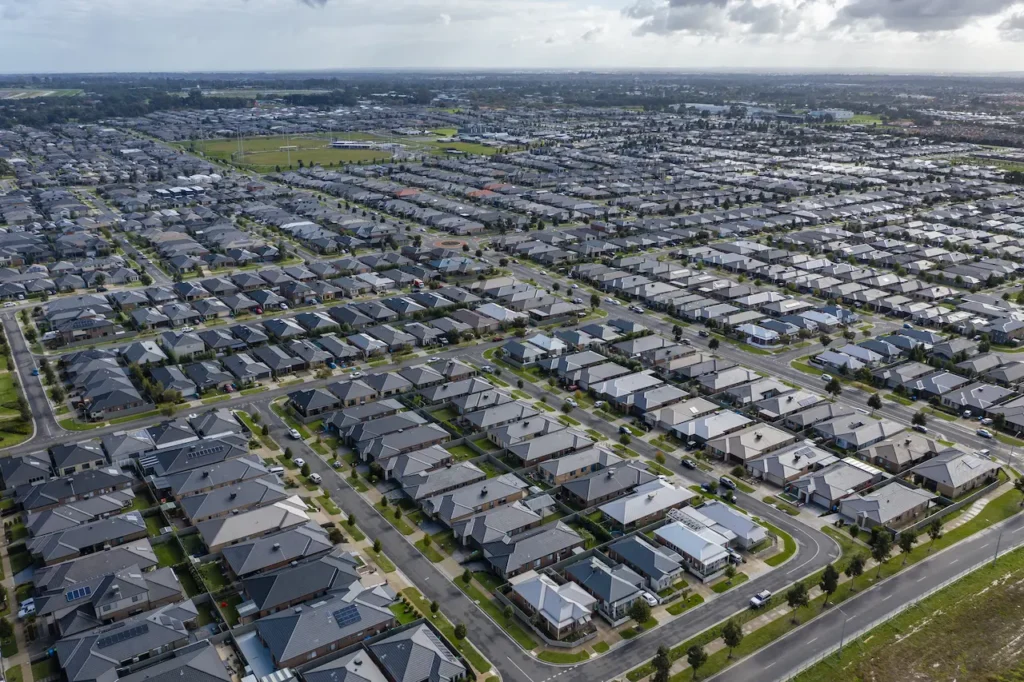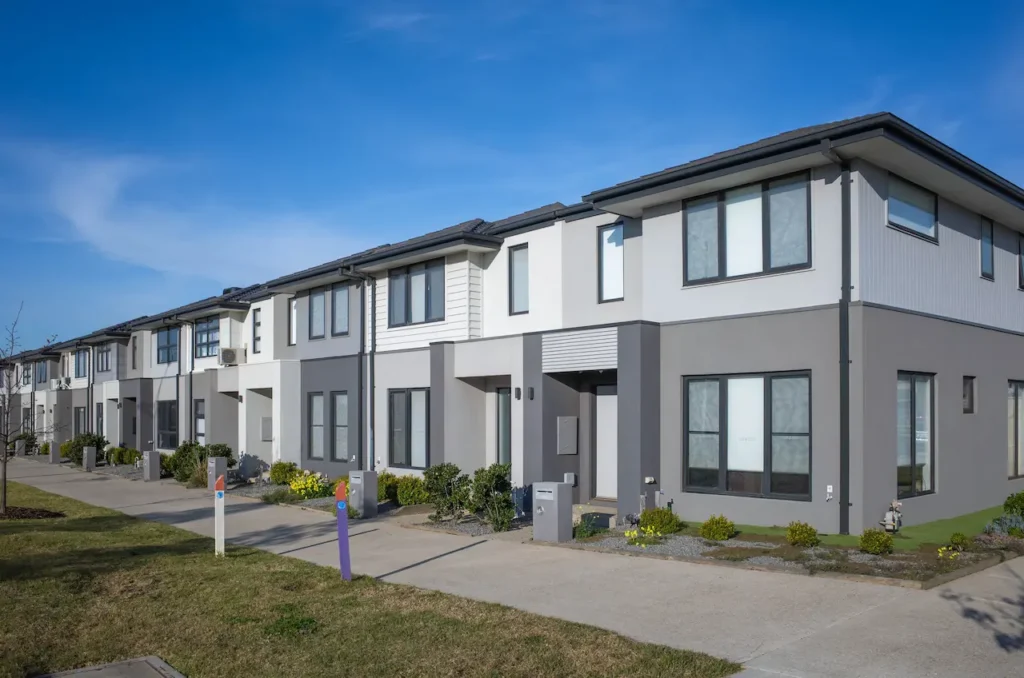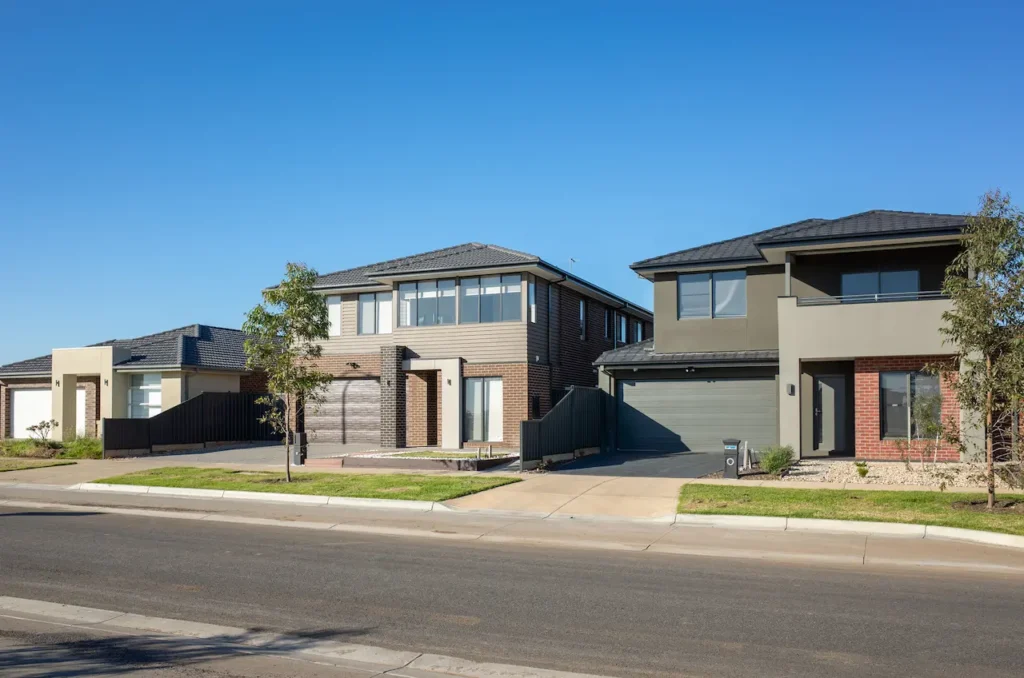Introduction
Australia’s property market, especially in major cities like Sydney and Melbourne, is often a focal point for local and international investors. Traditionally, much of the media and investor attention has been concentrated on high-end properties—luxury homes in prestigious areas with multimillion-dollar price tags. However, there is growing recognition that low-end properties—those in more affordable, suburban areas—are becoming increasingly attractive as investment opportunities. While the prestige markets in Sydney and Melbourne have certainly rebounded following the property downturn, the lower-end markets present unique advantages for those seeking long-term, strategic investments.
At RiskWise Property Research, we’ve consistently advocated for a deeper examination of these often-overlooked markets. As we continue to analyze shifting economic conditions, demographic changes, and evolving buyer sentiment, it’s clear that low-end properties in these two major cities are positioned for strong growth in the coming years. This article delves into the factors that make low-end properties in Sydney and Melbourne particularly appealing to investors and explores why they represent some of the best opportunities in the current market.

The Resilience and Potential of Low-End Properties
While Sydney and Melbourne’s high-end property markets have dominated headlines with their rapid price recovery, the low-end property market has quietly demonstrated impressive resilience and growth. Several key factors contribute to the increased demand and rising prices in these lower-priced areas, which have historically been viewed as more affordable options for homebuyers. The current conditions suggest that these areas are poised for continued growth, driven by shifts in the local economy, urbanization trends, and changing consumer preferences.
1. Affordability: A Key Driver for Growth
One of the most significant factors that make low-end properties in Sydney and Melbourne attractive is affordability. With property prices skyrocketing in many inner-city and middle-ring areas, many potential buyers—particularly first-time homebuyers—are finding it increasingly difficult to enter the property market. For this group, low-end properties in suburban areas offer a more affordable alternative that is still within reach.
For instance, in Sydney, suburbs such as Vaucluse, Double Bay, and Mosman have median house prices well over $2 million, making them prohibitively expensive for the average buyer. Similarly, in Melbourne, areas like South Yarra and Toorak have median prices exceeding $1.5 million. In contrast, low-end suburbs in Sydney’s west and Melbourne’s outer ring provide much lower entry points. Suburbs such as Mount Druitt, Blacktown, Liverpool, Campbelltown, and in Melbourne’s western corridor areas like Sunshine, Werribee, and Footscray have significantly lower property prices, making them more accessible for a larger pool of buyers.
As demand for housing continues to grow, these more affordable areas are seeing increased competition among buyers, which naturally puts upward pressure on property prices. This trend has been further fueled by government incentives for first-time buyers, low interest rates, and more favorable lending conditions, all of which make it easier for homebuyers to afford properties in these markets.
2. The Impact of Gentrification
Gentrification plays an important role in the price growth of low-end properties. Gentrification refers to the process by which once-deprived or economically challenged areas are revitalized due to increased investment, improved infrastructure, and an influx of wealthier residents. Over time, gentrification transforms these areas into more desirable places to live, which results in increasing demand and rising property values.
In cities like Sydney and Melbourne, there are numerous examples of gentrifying suburbs that have experienced significant property value increases over the past decade. Once-neglected areas like Redfern and Marrickville in Sydney, or Footscray and Brunswick in Melbourne, were previously considered affordable options but have become highly sought-after due to substantial investments in infrastructure, improved amenities, and better public transport options.
Many of Sydney and Melbourne’s outer suburbs that have been traditionally considered “low-end” are now following the same trajectory. Areas such as Penrith, Campbelltown, Blacktown, and Mount Druitt in Sydney, or Sunshine, St Albans, and Dandenong in Melbourne, have long been seen as affordable options. However, thanks to substantial urban renewal projects and government investments, these areas are now becoming increasingly popular with younger professionals, families, and investors. This is particularly true as home prices in inner-city and middle-ring suburbs become unaffordable to a growing number of potential buyers.
For investors, these gentrifying suburbs present substantial growth potential. As these areas continue to develop and attract new residents, property values are likely to see significant appreciation, providing investors with the opportunity for long-term capital growth. Furthermore, as these areas become more desirable, rental demand will also increase, providing solid rental yields for investors.
3. Population Growth and Urbanization
Sydney and Melbourne’s population growth plays a critical role in the demand for housing, and specifically in the increasing need for affordable housing in outer suburbs. As both cities continue to experience strong population growth, largely due to interstate and international migration, demand for housing will only rise. While many buyers are flocking to the inner city for proximity to work and lifestyle amenities, the growing number of people looking for more affordable housing options is fueling demand in suburban and outer areas.
Melbourne, in particular, is on track to become the largest city in Australia by 2030, and Sydney is projected to grow significantly over the next several decades. In line with these projections, areas in the outer ring and western suburbs are seeing rising demand for both homes and rental properties.
Increased population growth and migration are not only driving demand but also encouraging urban sprawl, as people look to purchase homes that are within their budgets. As demand for affordable housing continues to outstrip supply in established inner-city areas, many buyers are choosing to move into suburban areas where prices remain more affordable, yet access to city amenities is still available.
For investors, this presents a clear opportunity. As demand for housing in these areas rises, property values are likely to increase over the long term. RiskWise Property Research consistently monitors population trends to identify which suburbs are likely to benefit the most from this growth, helping investors make data-driven decisions about where to allocate their capital.

4. Infrastructure Development and Government Investment
Government-led infrastructure development is another key driver behind the rising value of low-end properties in Sydney and Melbourne. Infrastructure projects such as new public transport links, schools, healthcare facilities, and community hubs are instrumental in making once-overlooked suburbs more attractive to buyers and investors. These projects improve the overall liveability of an area and help to increase its accessibility, thereby driving up demand for properties.
In Sydney, major infrastructure projects such as the North West Rail Link, the Western Sydney Airport, and the Sydney Metro are transforming outer suburban areas by improving transport connectivity. These projects have had a particularly strong impact on areas like Blacktown, Parramatta, Penrith, and Liverpool, where previously undervalued properties are now more accessible to potential buyers.
Similarly, in Melbourne, new projects like the Metro Tunnel, Suburban Rail Loop, and the development of new housing estates in the city’s west and south-east are greatly enhancing the appeal of suburbs such as Footscray, Sunshine, and Dandenong. These projects are helping to improve living standards and provide easier access to the city, making previously affordable areas more desirable to both homebuyers and investors.
As these infrastructure projects are completed, property demand in surrounding areas is likely to surge, pushing up property values. For investors, this represents a substantial opportunity to purchase properties in areas that are on the cusp of transformation. As infrastructure improves and connectivity to the city centre becomes easier, these suburbs will increasingly become desirable places to live and invest.
5. Market Sentiment and Buyer Confidence
The broader market sentiment surrounding property investment in Sydney and Melbourne has seen significant improvement. In recent years, the market experienced a downturn, driven by factors such as tightening lending conditions and concerns about rising household debt. However, with interest rates at historically low levels and more favorable lending conditions, the market is now showing signs of recovery.
In particular, buyer confidence has improved markedly, with auction clearance rates in both cities rising above 70%, signaling a return of positive sentiment. RiskWise Property Research closely monitors buyer sentiment and provides insights into market trends, which are essential for identifying growing markets and emerging opportunities.
For low-end properties, this improved sentiment is critical. As more people return to the market and investor activity picks up, demand for affordable properties will continue to increase. This creates the potential for further price growth in areas where affordability remains a key selling point, particularly in the suburbs that are already benefiting from gentrification, infrastructure development, and rising population growth.
The RiskWise Property Advantage: Expert Market Insights
At RiskWise Property Research, our team of experts constantly monitors the housing market in Sydney and Melbourne, providing investors with the insights they need to navigate the complexities of these two major cities. Our research focuses not only on property price trends but also on broader factors such as economic growth, demographic changes, government policies, and infrastructure developments that influence market dynamics.
Our team utilizes cutting-edge data analytics and market modeling to identify emerging trends in real-time, allowing us to provide actionable insights that help investors make informed
decisions. We also track regional disparities in growth, identifying areas that are likely to experience significant capital gains based on their unique characteristics, including the potential for gentrification, population growth, and government investment.
By combining our deep knowledge of Sydney and Melbourne’s property markets with a forward-looking approach to market research, RiskWise Property Research provides investors with a comprehensive and accurate understanding of the risks and opportunities within the property market. This helps investors not only to identify underpriced, low-end properties but also to understand the broader market dynamics that could influence long-term growth and investment returns.

Conclusion
In summary, the low-end property markets in Sydney and Melbourne present an exceptional buying opportunity for those looking to enter the property market at an affordable price point while positioning themselves for long-term growth. Factors such as affordability, gentrification, population growth, and infrastructure development are driving demand and pushing property values upward in these once-overlooked suburbs. Additionally, government policies and increased buyer confidence are likely to continue supporting price growth in the coming years.
At RiskWise Property Research, our team of experts is dedicated to providing investors with accurate, data-driven insights into these markets, helping them identify the most promising investment opportunities in the low-end property space. As Sydney and Melbourne’s housing markets continue to recover and grow, the low-end properties in these cities will remain an important part of any successful investment strategy.
By focusing on these often-overlooked areas, investors can take advantage of strong growth prospects and achieve significant returns on their investments over the long term. With the support of RiskWise Property Research, investors can confidently navigate these dynamic markets and make informed decisions that will drive their financial success.